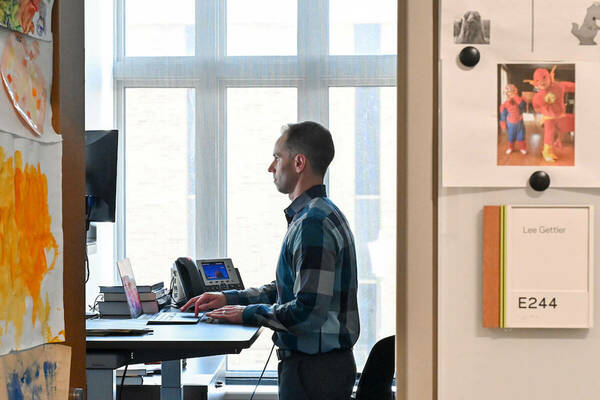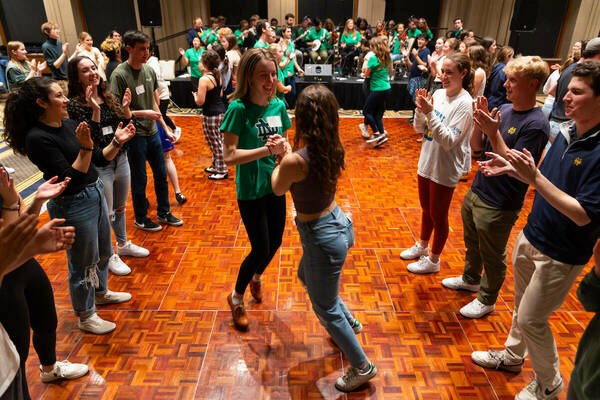
Some may look at Dante’s Divine Comedy and see just a dusty trilogy of poetry written by a long-gone Florentine. But for others, Dante and his opus are immortal. For them, Dante is now.
In that spirit, Italian Studies at Notre Dame and the College of Arts and Letters’ William and Katherine Devers Program in Dante Studies will host “Dante Now!”—a series of public readings from The Divine Comedy. Readings will occur simultaneously at various locations around campus on November 2, beginning at 2 p.m.
The event is meant to bring the “vibrant immediacy” of The Divine Comedy to life for a modern audience, says Anne Leone, postdoctoral research fellow in Italian studies and one of the event’s organizers, along with Alessia Blad, an assistant professional specialist in Italian, Ph.D. in Literature candidate Damiano Benvegnu, and Laurence Hooper, a former Devers Program postdoctoral fellow now at the University of Chicago.
“Students of Dante will know that reading his works alone and silently can be a life-changing experience, the fruits of which will endure and ripen,” Leone says. “But reading his works aloud—and together—promises to be another experience entirely.”
To best capture the music and rhythm of Dante’s poetry, the readings will be in the original Italian, but English translations will be provided to performers and spectators. Performance locations include:
• the Word of Life Mural (“Touchdown Jesus”) at Hesburgh Libraries
• the Clarke Memorial Fountain (“Stonehenge”)
• the stairs of the Main Building
• the Knute Rockne Memorial Building
• the stairs of Bond Hall
• the Sesquicentennial Common (between the Law School, the Fitzpatrick Hall of Engineering, and DeBartolo Hall),
• the Knute Rockne statue, North Tunnel of Notre Dame Stadium
• the Shaheen Mestrovic Memorial (west side of O’Shaughnessy Hall)
• the Hammes Notre Dame Bookstore, by the Mary and Elizabeth sculpture (“The Visitation”)
“We have chosen locations that are conspicuous and popular since our hope is to encourage a wide range of people to stop by for a few moments and share this new experience with us,” Leone says.
The readings will conclude at 3 p.m. when performers—and interested spectators—are invited to gather at the Grotto for a communal recitation of St. Bernard’s Prayer to the Virgin, which forms the conclusion of Dante’s trilogy.
Afterward, at 3:30 p.m., the Devers Program and Italian Studies at Notre Dame will host an illustrative lecture titled “What’s Wrong With This Picture? How to Read Dante’s Hell” in the Hesburgh Libraries Department of Special Collections.
Christian Moevs, associate professor of Italian, and Theodore J. Cachey, Jr., the Albert J. and Helen M. Ravarino Family director of Dante and Italian Studies and chair of the Department of Romance Languages and Literatures, will join Justin Steinberg, associate professor of Italian literature at the University of Chicago, to interpret some of “the most powerful—and at times quite harrowing—moments in The Inferno, by reading them through a method analogous with the game from the comics page or the back of the cereal box, where the object is to figure out what’s wrong with the picture,” Leone says.
All of the events are open to the public, and Leone emphasizes that everyone is welcome to participate in the readings.
“This is an event for people who already love Dante, and also for those who don’t know much about him at all, and would like to know more,” she says.
For more information about the event and how to participate, email Anne Leone at aleone@nd.edu.


